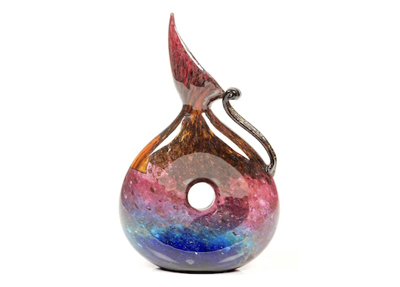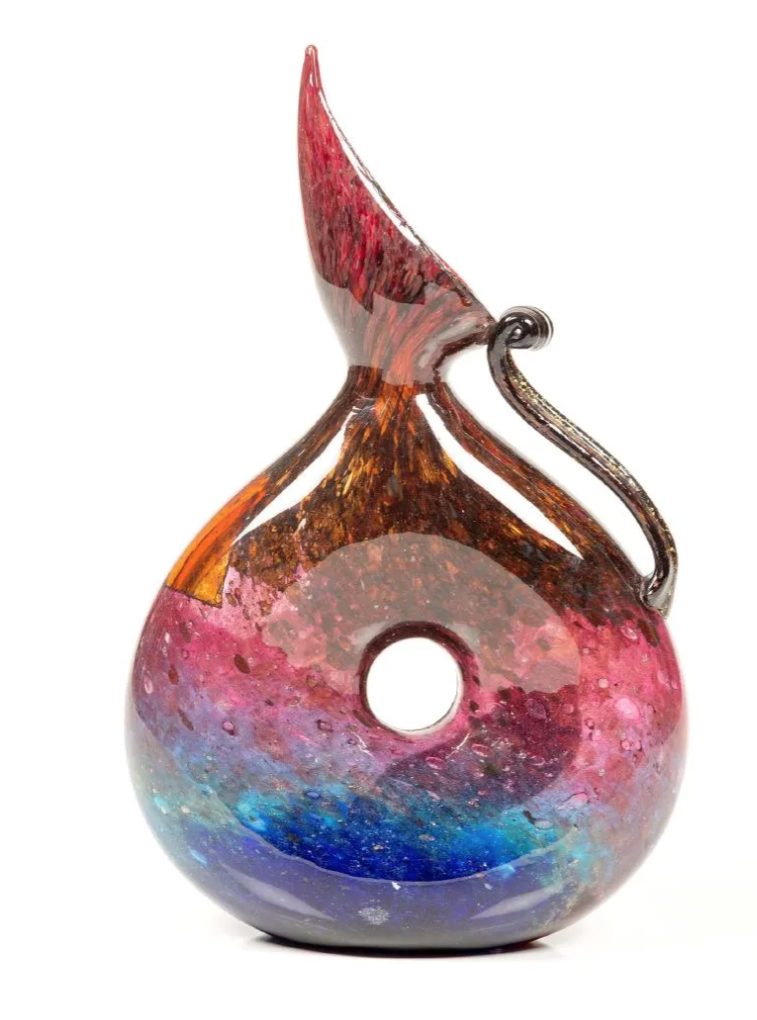
NEW YORK — Italian art glass represents the pinnacle of glass-making, and ranking among the medium’s finest artisans is Dino Martens (1894–1970), renowned for his tireless experimentation and his imaginative designs.
Born in Venice, Corrado “Dino” Martens initially trained as a painter but worked with several glass factories after serving a stint in the military. He had a keen understanding of the properties of glass and was able to challenge the potential of the medium. Taking molten glass in hand, figuratively speaking, he shaped it in bold and original ways that were visionary in his time.
Glass-making has a long history in Italy; in the 13th century, proponents of the trade were sent to the island of Murano, just off the coast of Venice, for fear the hot kilns they required would start fires in the city. While there are several notable periods of innovation for Italian glass on Murano, a peak of creativity took place between the 1950s and 1960s. Martens helped drive this mid-century phenomenon. Having started designing for Aureliano Toso’s glassmaking firm in 1939, he was named its artistic director in 1947, after which he created many of his most memorable and desirable works.
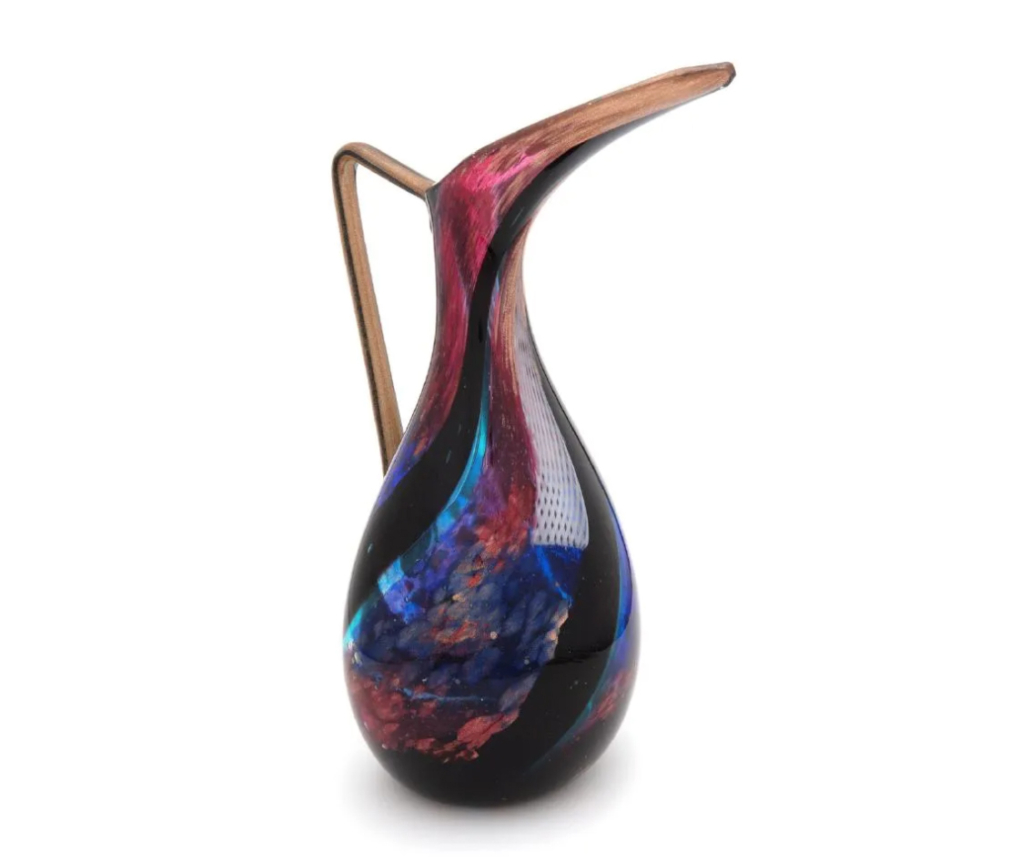
“Working with the Aureliano Toso glass factory, he produced a remarkable series of vases between 1946 and 1960, which combined traditional Venetian techniques with bold colors and asymmetrical forms,” according to the website of Wright, which has achieved strong auction prices for works by Martens.
Almost 60 years after he retired from Aureliano Toso, Martens’ glass still casts a spell on collectors. A Bonhams New York sale in October 2021 broke a world auction record for the artist when an unusual Anfora “Ape” vase from 1952 sold for $256,563. This was said to be his first creation using his celebrated Oriente technique in a vase form, which he never repeated. In a press release issued after the sale, Bonhams specialist Dan Tolson said, “Dino Martens was an exceptional powerhouse of creativity with a unique eye for form, color and technique that set his work apart from other 20th century Italian glass masters.”
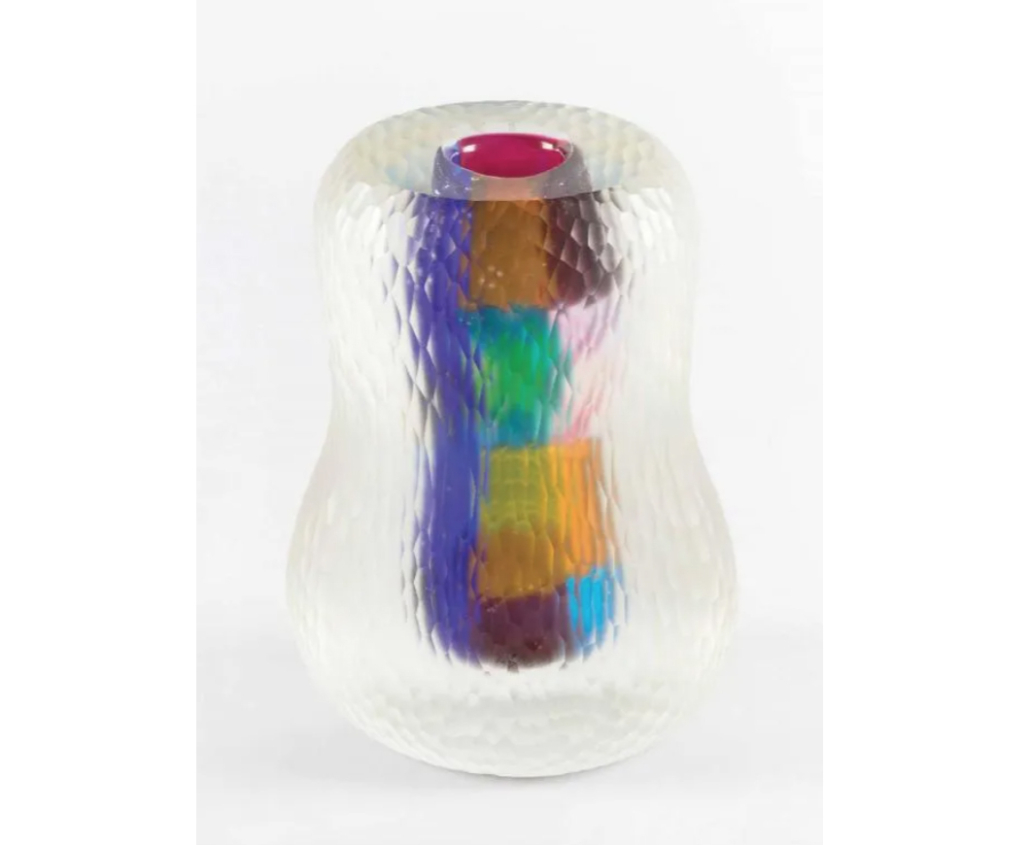
Besides his asymmetrical and biomorphic pieces, Martens was lauded for his clever use of oversized murrines (glass canes featuring patterns or images) together with vivid metallic powders that he rolled molten glass into. His work came to define the 1950s glassmaking style in Murano. Martens’ best pieces tend to feature a patchwork composition of aventurine, especially with gold or copper flakes; multi-colored filigree canes; murrine pinwheels and bright sprays of color pigment.
A favorite technique of his was shaping an elongated beak spout on his vessels, as seen on a circa-1950 blown glass vase that has the interesting addition of a central hole. It made $37,270 plus the buyer’s premium in February 2017 at Cambi Casa D’Aste. The piece also reflects Martens’ predilection for asymmetry.
Martens made repeat appearances in the Venice Biennale — first as a painter in the mid 1920s to the 1930s, and then later for his glass. His Eldorado series was well received at the 1952 edition of the event. An Eldorado pitcher sporting a beak-spouted neck in granular glass and aventurine and inset with reticello and zanfirico rods achieved $74,540 plus the buyer’s premium in November 2018 at Capitoliumart s.r.l.
Two years later at the 1954 Biennale, Martens again showed revolutionary work such as submerged glass with interior and exterior hand-carved decorations. That exhibit included works that were similar to a Gomitolo vase auctioned in Italy. Made in sommerso glass, the vase features polychrome reeds decoration and zanfirico inserts in a thick crystal layer having an overall chiseled surface. It earned $109,481 plus the buyer’s premium in February 2018 at Cambi Casa D’Aste.

Another standout from his Oriente series were his Geltrude pieces, one of which sold for $50,000 plus the buyer’s premium in December 2020 at Wright. Internally decorated with polychrome patchwork glass with copper inclusions, a black and white murrine pinwheel and filigrana, the 1954 piece also includes a stylized face.
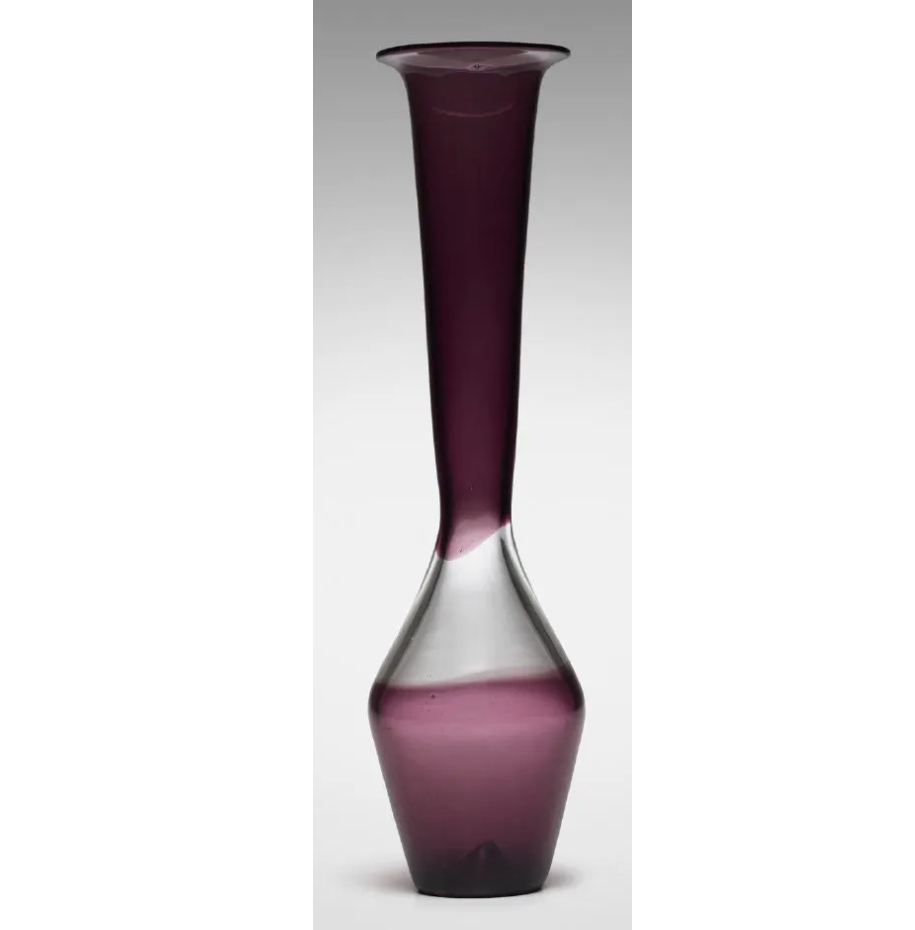
Much of Martens’ work is daring, with bold patterns and vivid chromatic blendings, but his mature work shifted towards more subtle coloring and elongated forms. A fine example of his late-career work is a Celebes vase that realized $18,000 plus the buyer’s premium in May 2017 at Wright. Instead of bold patterns of multicolored glass, the circa 1958-59 piece in double incalmo glass is elegant in its simplicity, featuring only purple and clear glass that blends seamlessly.
Regardless of its date, Dino Martens’ masterpieces in glass continue to capture and hold the attention of collectors. His bold, innovative approach to glass-making proved that even a millennia-old art form can be rejuvenated by a thoughtful, talented individual who understands it and believes in it.


